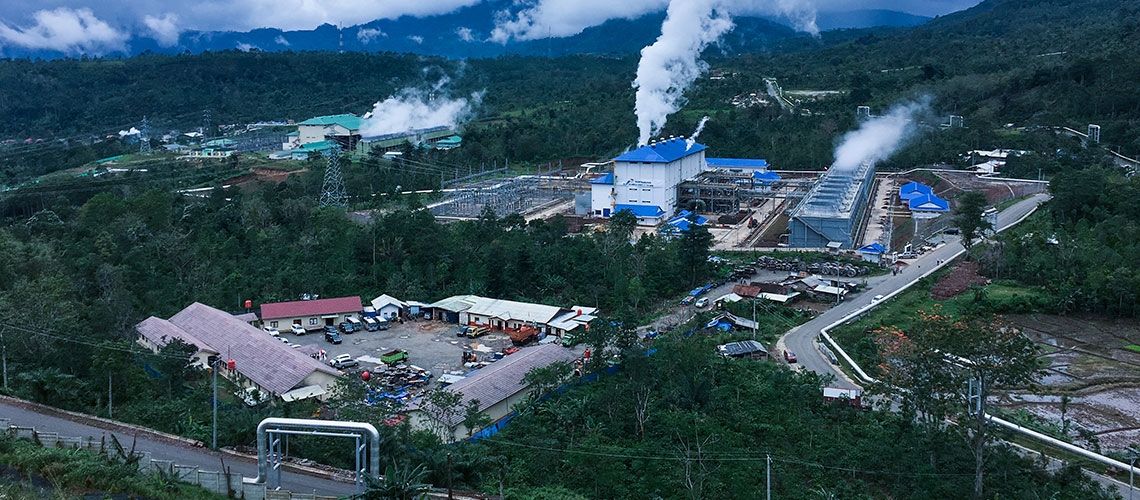JAKARTA -When the 2004 earthquake and tsunami wiped out homes, buildings, and roads in Aceh, the government was confronted with two options: build everything back to pre-disaster conditions or seize the opportunity to ‘build back better’. They chose the latter, prioritizing the needs of local communities while ensuring resilience to future disasters. Today, as the global economy reels from the effects of the pandemic, leaders are being asked the same question: can we design a recovery that not only saves lives and generates growth, but that is also resilient and sustainable over the long term?
The question becomes even more critical as the frequency and intensity of climate-induced disasters in Indonesia increase. In the past few years, the country has seen prolonged droughts and forest fires in Sumatra and Kalimantan in 2019, and a year later massive floods across Java following the highest rainfall in 150 years. Indonesia’s climate risks will continue to intensify and hit the poorest the hardest, leading to significant costs estimated at between 2.5-7 percent of GDP , according to the Climate Risk Country Profile developed by the World Bank Group and the Asian Development Bank.
Over the past year, global efforts to transition towards a greener economy have accelerated. Efforts to promote low-carbon growth are expanding, as seen in the shift toward renewable power around the world. Carbon pricing initiatives—such as emissions trading and tax instruments—which are in place or in development in 61 jurisdictions, have almost doubled in the past decade alone. Over 100 countries have set or are considering net-zero emissions targets, including Indonesia. Responding to these signals, green investments in Asia Pacific, North America, and Europe have almost doubled since 2016.
The challenge is to maintain this momentum through the post-COVID 19 recovery process, including by allocating fiscal stimulus towards green programs. There is also an opportunity for Indonesia to leverage funds from the private sector to help drive innovation and investment. The issuance of green sukuk is a promising start.
Not only can Indonesia make the shift to a green economy, recent modelling by the Ministry for Development Planning (BAPPENAS) shows that it is a desirable strategy that can generate jobs and growth in line with the country’s development targets. According to BAPPENAS, a low carbon development path towards net zero emissions in 2045 can deliver a GDP growth rate of 6 percent a year on average, above current business-as-usual projections, and create an estimated 15.3 million jobs. In addition, this trajectory will position the country as a leading destination for green private investment.
Just as was done in Aceh, Indonesia can focus on its own opportunities and needs as both energy and land use transition to a low-carbon future. In land use, there are opportunities for investment in higher value agriculture, efficient land-use planning, as well as to reduce deforestation and fires, supported by climate finance. This would build on recent success in reducing deforestation and towards the 2030 carbon neutrality target in the forestry and land use sector. As the only tropical forested country that has successfully reduced deforestation over the past four years, Indonesia could transform itself into a global leader, showcasing how a green economy aligned with Pancasila values can be achieved. The partnership between the World Bank and Indonesia to reduce emissions from deforestation in East Kalimantan could be replicated and scaled up.
Other areas of opportunity are seen in the energy sector. The last year has seen a rapid evolution of the ambitions of the Government and State Electricity Company, or PLN, for Indonesia’s power sector. Decarbonization of electricity has come to the fore with commitments not to build any new coal-fired power plants after 2023 and phase out all such plants by 2056.
The World Bank is supporting the energy transition through investments such as the development of the first large-scale pumped storage hydropower to enable renewable energy penetration in the Java-Bali grid and analytical work to provide a comprehensive pathway toward a more sustainable energy sector. Relatedly, the World Bank’s preliminary analysis suggests that solar power has the potential to generate an estimated 300,000-515,000 new jobs for Indonesia. A comprehensive plan for new jobs in coal-dependent communities would complement the moratorium on new coal-fired power plants, ensuring that all parts of society benefit. To support the energy transition, Indonesia could use carbon pricing and improvements to the regulatory framework to drive investment in renewables and energy efficiency.
Through these actions and more, Indonesia has an opportunity to harness low-carbon opportunities for higher quality jobs and growth, ensuring that the country builds back better than before through a green recovery. Accelerating the green transition is not just the right thing to do to protect people and the environment, it’s the smart thing to do for the economy and the future.

